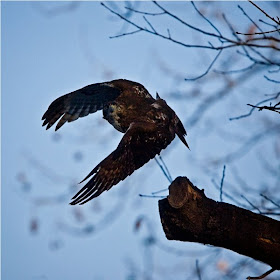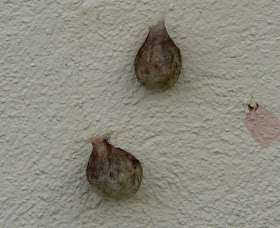 Photograph by Francois Portmann www.fotoportmann.com/
Photograph by Francois Portmann www.fotoportmann.com/
Eye to eye! Valkyrie really wants that squirrel and he is giving her a run for her money. Thank you to Francois for the great photo sequence. I'm having download problems so I'll try to get the other half of the sequence posted when things smooth out Photograph by Francois Portmann
Photograph by Francois PortmannPhotograph by Francois Portmann
Photograph by Francois Portmann
Photograph by Francois Portmann
Photograph by Francois Portmann
Photograph by Francois Portmann

Photograph by Francois Portmann
Photograph by Francois Portmann
And look who is overseeing the festivities of Red-tail Valkyrie in Tompkins Square Park. She just might be a Valkyrie herself.
***************************************************************
From Sally of the Tulsa Forum--
Dear Donna,
Today several of us were watching the KJRH tower cam with delight as Kay and Jay both visited the nest several times on camera and placed sticks. At one point it was obvious that the camera operator was taking video clips, and there has been discussion by the watchers of trying to get more camera time on the nest.
Today Russell Mills, Online Content Director and our friendly camera/video operator said, "We're currently trying to figure out if we can get a webcam up there somehow which would be locked down on a shot of the nest... no promises, but I'm hopeful."
Is it too late in the nesting season to have someone go up and install a dedicated nestcam, if the station is willing to do so/allow that? We certainly wouldn't want to disrupt the pairs nesting this year! What do you think? We are eager for your opinion!
Sally
Help Raptor Rehabilitation of Kentucky, Inc. by searching and shopping through www.goodsearch.com Good Search donates to our organization for every purchase or search made through its sites. Sally,
You can never tell for sure how birds will react. But Pale Male and Lola have had people on their nest at various periods of time over the years and they have still always used it. Kay and Jay have used the tower successfully before so that strengthens their bond to it.
Isolde put up with all the scaffolding and workman at the Cathedral of St John the Divine, before nesting, during nesting, and onward though last season, 2008, without abandoning the location. I think part of it for urban hawks may be that there aren't really that many good available nest sites within a given territory so the lack of good alternatives is another selling point to sticking.
That said Mama and Papa in Queens did switch last season to a tree. What their reasoning was we don't know. A nest cam had been installed in their previous site, but they had used the nest with the cam through a full season and then for some reason switched before laying the next year. It's possible that the cam had nothing to do with their move but we don't know because they just refuse to give interviews. A lovely hawk couple they just treasure their privacy.
As I said there is no "for sure" about anything when it comes to hawks. As John Blakeman advised when there was to be work done on the 927 Fifth Avenue, if the installation is done now, the workers aren't up there futzing around for too long, and the installation isn't found by the hawks to be in the way somehow, it should be just fine.
I suggest, as Mr. Blakeman advised us, that just in case the hawks are annoyed by activity near their nest, it would be advisable for the workman to wear hardhats with big "eyes", big black ovals, on the front. (I'll check my archives for a photo for you.) The eyes supposedly make the hawks believe that they are being watched even if they aren't and they will have more of a tendency to keep some distance if and when they swoop in. You might suggest it to Russell Mills as a good safety measure during work in the tower.
As far as I know workman who have worn the "eye" hardhats, and were near the nests before laying, have had some pass overs but nothing close. Mostly the birds just fly over checking out what the men are doing to their nest.
When Isolde had young in the nest, and the workman insisted on using the catwalk directly above the nest, she did slightly nab a worker. He didn't even have his hardhat on, let alone one with eyes, and at least in my opinion had no business being directly above the nest when there were other options available. If humans would just respect a nest for that short period of breeding time, there would be no conflict between hawks and humans. The space could be shared amicably year round. But sometimes humans don't use their supposedly highly developed noggins. They, in my opinion, are the one's causing the conflict, not the hawks.
**************************************************************************
Now to the 2008 season at 927 Fifth Avenue--
Longtime watcher of Pale Male Jr. and Charlotte, Brett Odom, remembered another possible clue to the puzzle of Pale Male and Lola's 2008 failure---
Hey Donna.
With regard to John Blakeman's observations about PM and Lola's eggs last year. I do remember Lincoln Karim (www.palemale.com) posting something last spring about PM & Lola leaving the eggs unattended for about 14 minutes (possibly more). I do not recall the weather of this specific instance, but if PM & Lola did this once for Lincoln to observe, it could be safe to say it happened more than that and the weather could have gotten to the eggs.
Brett B. Odom
brettodom@mac.com
It's true. According to the Red-tail literature egg viability can be destroyed by the cooling of eggs during absences and even with an adult covering the eggs in cold windy, or cold wet weather.
Jeff Kollbrunner, www.jknaturegallery.com/ the main watcher of Papa and Momma in Queens sent in a file of weather information. Thanks Jeff.
Also for those who might want to help browse the weather for Spring of 2008, uptown hawkwatcher Rob Schmunk of http://bloomingdalevillage.blogspot.com/ sent an extemely helpful email--
What I have used for this is Wunderground.com.
Look up today's weather for the location of interest. Then on that page look for a link that says "Weather History for This Location".The page you are looking at will have links on it for daily, weekly,monthly and yearly info. It will look like it's only bringing up a graph of info, but page down to see a table. Unfortunately though, Wundergound has ads all over it. It will be a much more pleasant site if you have an ad blocker plugin in your browser.
Thank you Rob!
Donegal Browne






















































































